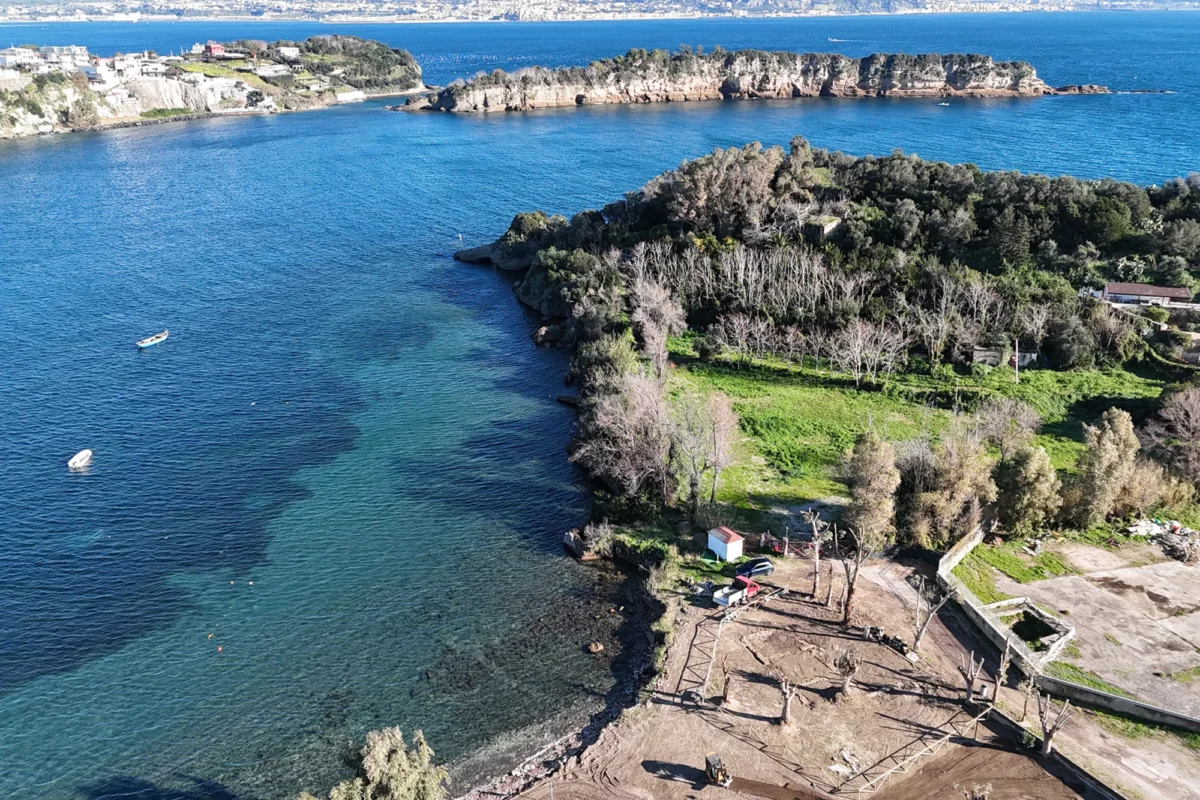2,000 Year-old Beach House Found in Naples, Italy

A three-year project to construct a children’s playground and recreation area south of Naples, Italy, led to the discovery of a 2,000-year-old clifftop beach house. Dating back to the first century, the mansion, possibly belonging to Pliny the Elder, overlooks Ischia and Procida islands, now partially submerged by the sea. The excavation in Bacoli revealed thick perimeter stone walls, 10 large rooms with floors, tiled walls, and panoramic outdoor terraces.
The villa, originally part of the Roman port at Misenum, held strategic military importance with a 360-degree view of the Gulf of Naples. Constructed with ornate diamond-shaped tufa blocks, the walls demonstrated surprising detail. The “negative bradyseism” phenomenon caused parts of the villa to be submerged as the earth’s surface gradually descended into the sea. (The phenomenon of “negative bradyseism” refers to a gradual geological process where the earth’s surface slowly sinks. This can be due to various natural factors, such as tectonic movements or the extraction of fluids from the ground.)
Ongoing digs aim to uncover more about the beach villa and Misenum’s broader structure. The discovery is significant due to limited knowledge about the port of Misenum. Besides its lookout purpose, Pliny’s beach villa likely served for leisure, hosting guests at a private dock for lavish parties. Bacoli, within the Phlegraean Fields, was a popular destination for Ancient Romans, known for vacation homes, thermal baths, and spas.
Bacoli’s location, with natural geysers and frequent earthquakes, contributed to its historical significance, often regarded as the entrance to the underworld. Pliny the Elder may have witnessed the Mount Vesuvius eruption in AD 79 from the villa, where he later died attempting rescues. While archaeologists were surprised, local speculation about an underground treasure existed. The site will now become an open-air museum, showcasing the Roman villa’s ruins. Bacoli’s mayor, Josi Gerardo Della Ragione, anticipates the museum’s opening in the coming weeks, allowing citizens and visitors to admire the historical findings.